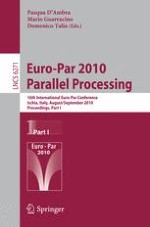2010 | Buch
Euro-Par 2010 - Parallel Processing
16th International Euro-Par Conference, Ischia, Italy, August 31 - September 3, 2010, Proceedings, Part I
herausgegeben von: Pasqua D’Ambra, Mario Guarracino, Domenico Talia
Verlag: Springer Berlin Heidelberg
Buchreihe : Lecture Notes in Computer Science
